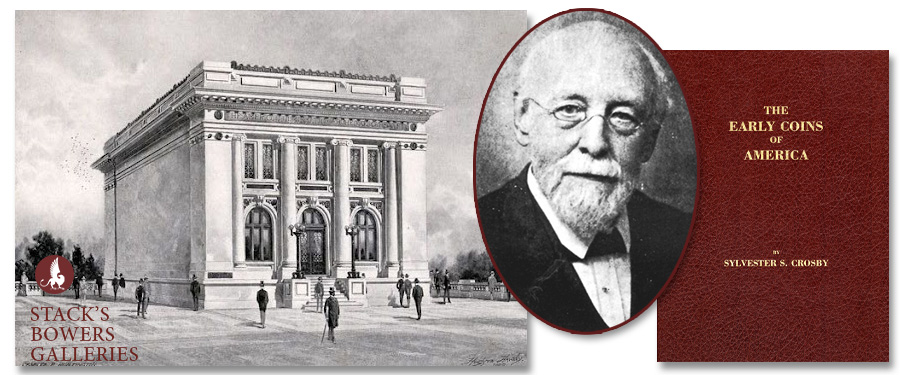
In the early 20th century, the American Numismatic Society got a permanent home, the result of the continued beneficence of Archer M. Huntington, the philanthropist and numismatist. Huntington donated the land for, and financed the construction of, the ANS’ first dedicated facility which opened in 1908 and was expanded in 1930. It was the home of the ANS until 2003.
Several names appear in a frieze along the top of the building’s face, the names of numismatists regarded by Huntington as the finest in their respective specialties and who made substantial contributions to the field. Among the half-dozen names there is one American: Sylvester S. Crosby, a name instantly familiar to American colonial coin collectors.
Crosby was a Boston-based watchmaker who began collecting coins in the late 1850s as the hobby caught on in the United States. His die marriage study of 1793 large cents broke new ground when it was published in the American Journal of Numismatics in 1869. It offered collectors of early American copper coinage the first catalog of die marriages for a single date; it also inaugurated the broader practices of studying die marriages of early large cents. His 1875 Early Coins of America was similarly influential, regarded for more than a century after its publication as a standard reference on American colonial coins. He was an honorary member of the ANS and many other numismatic organizations and served as president of the New England Numismatic and Archaeological Society.
Of all the numismatists Huntington could have picked to represent the United States on the ANS’ building at the time of its construction, Crosby is an understandable choice.





